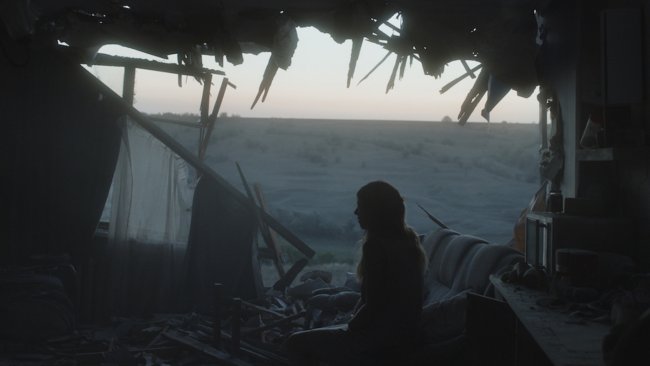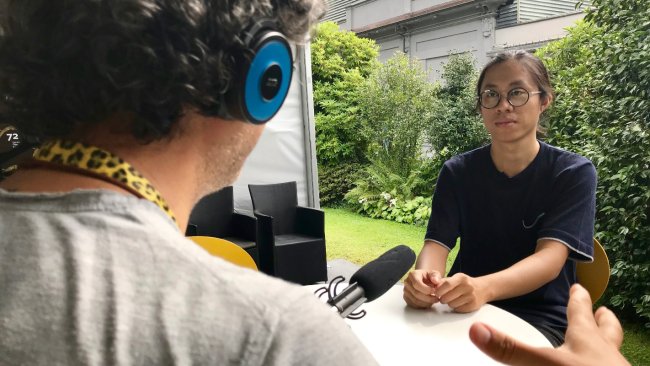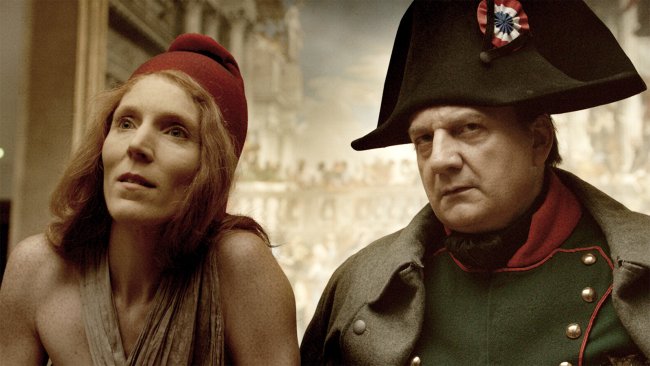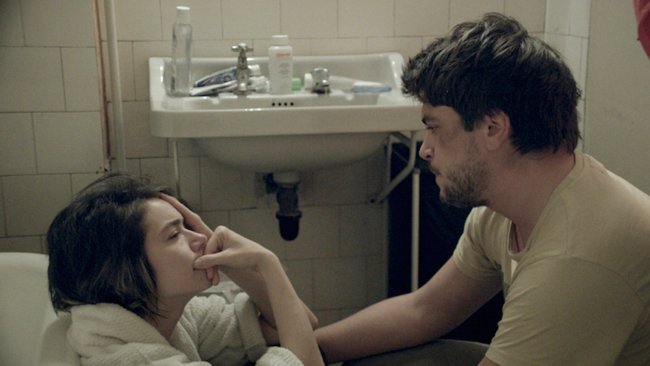Tobias Weber | Late Shift
[…] The story on the large screen is no longer simply delivered to us as an audience, but it is literally constructed by us. One becomes also more sensitive to the events in the film as one gains the sensation of controlling the story’s evolution, so that the occurrence of each event finally comes with a stronger emotional impact.
[…] The preference for interactivity has advanced not least because of the illusion of overcoming the model of passive consumerism that prevailed in the last century. But were we really passive in the classic immersive black box? Did we really do nothing more than chew on cheap sweets and eat popcorn?
Text: Giuseppe Di Salvatore | Audio/Video: Ruth Baettig
In the Riff Raff cinema we took part in a historical event: the premiere of the first interactive movie where the audience chooses in which direction the movie can go – although one should mention the Czech Kinoautomat by Raduz Cincera, who, for the 1967 Expo in Montreal, used a custom-built cinema with buttons installed on each seat (it is interesting to note that Cincera’s intention was to show the futility of the audience’s choice and to induce its deception as the film, which was later censored in Czechoslovakia, inevitably ended the same way in every screening…). Armed with smartphones and tablets, we entered the black box, which would then be illuminated by the cinema’s large screen but also by the multiplicity of individual screens on which we can exercise our will. The film itself thematizes the question of the free will, as the main character questions himself about his effective capacity to control the events in his life, to deal with his destiny. The story is a thriller, and the events are well balanced through the recurring questions submitted to the audience (with two or maximum three options for the audience to choose from each time).
We admit that, in accepting to play this game, we were quite skeptical about the “work” we were expected to accomplish. And, it is true, the classic “immersion” effect of cinema is effectively lost. To that end, one should add the frustrating sensation of knowing that the audience often expresses a will different to one’s own (it is probably also with this in mind that the producers of Late Shift are targeting private consumers, to whom an App is available on the market). But, when considering this last aspect of sharing decisions, one realizes some interesting new aspects of the situation: the possibility of sensing the audience as a character that slowly constructs its personality, and the experience of seeing the main characters in the movie take their final shape as a result. It is something similar – I assume – to the experience a screen-player or a team of screen-players has when working on its characters and their story. The story on the large screen is no longer simply delivered to us as an audience, but it is literally constructed by us. One becomes also more sensitive to the events in the film as one gains the sensation of controlling the story’s evolution, so that the occurrence of each event finally comes with a stronger emotional impact. Moreover, in the case of Late Shift, the difficulty of total immersion is mitigated by the fact that we decide only the decisions of the main character, and not directly the unfolding of the story. In this way, we fully realize at least a partial immersion: the identification with the main character. This solution gives us immediate access to the meta-level of the theme of free will and decision-making: we make decisions in a story that thematizes decision-making itself. We could say that Late Shift introduces us to the strange experience of not being completely “in” the film in a very gentle way. A more sophisticated reflection on this theme would be that this film makes us experience an intermediate position between having control over-, and having to surrender to-, fate: the position of “guiding” – not controlling – our actions and our story. It is interesting that this guiding relationship between the mind and the world was an important solution to the crisis of psychology at the beginning of 20th century. Karl Bühler proposed it as an intermediate alternative to the incompatible models of voluntarism and behaviorism.
Because of the newness of this modality of watching a film, the main experience when viewing this film remains the interactive practice that is conveyed to us. My final reflection on the film concerns this crucial connection between interaction and “conveyance”. Great emphasis is put on the importance and novelty of interactive patterns in the cultural domain. The preference for interactivity has advanced not least because of the illusion of overcoming the model of passive consumerism that prevailed in the last century. But were we really passive in the classic immersive black box? Did we really do nothing more than chew on cheap sweets and eat popcorn? It is simply a question of which span of time we are considering. If we consider the time in which we experience a movie to be longer than the duration of its projection, thus including any reviews and expectations that precede the screening and the long discussions or lasting emotive effects that follow it, then we cannot say that the classic black box situation commits us to an exclusively passive relationship with the movie. Most movies work only in one direction, from screen to spectator, leaving the spectator to express and formulate her/his position towards the movie after the screening. The interactive practice that is now proposed is organized within a structure that strongly limits the room for an audience’s freedom. Indeed, we are actively making decisions, but only at a precise moment in the movie, and only in response to a specific question, choosing between no more than two or three options. So, is a completely regulated interaction like this really introducing more activity into the reception of the movie? At least after the movie we will be less disposed to actively react to the movie – to assume a critical and personal standpoint, for example – only because we partially made the movie…
I wanted to give a first sketch concerning this subject in order to stimulate a more articulate discussion on what appears to be a fashionable new dogma: interaction, or participation. Participation, when organized in minute detail throughout, can become a tool for controlling the room for dialogue, whereas a structure that allows for alternating moments of passivity and activity can help configure a more dialogic form of experience. However, precisely because this last question concerning new approaches to the moving image is currently a very central one, the screening of Late Shift – either in a classic cinema or at home using the App – constitutes an indispensable experience.
Watch
Info
Late Shift | Film | Tobias Weber | CH-UK 2016 | (264’) | Produced by Baptiste Planche and Kurban Kassam, Ctrl Movie
First published: May 05, 2016



